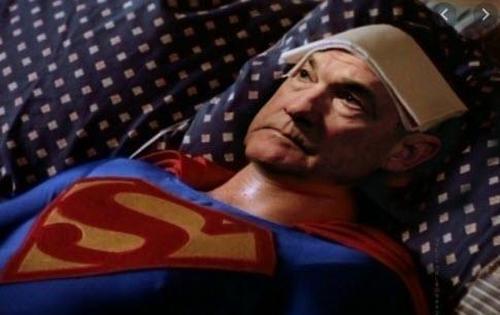The Fed Finally Gets Some Tough Questions… And Fails To Answer Them
Authored by Robert Aro via The Mises Institute,
Last Wednesday, Federal Reserve Chair Jerome Powell showed how simple questions do not always get simple answers. When speaking to the media after the latest Federal Open Market Committee (FOMC) meeting, some difficult questions were asked. So much so, Powell had to repeat one question to himself, asking:
When will the economy be able to stand on its own feet?
He immediately followed with:
I’m not sure what the exact nature of that question is.
FOX News correspondent Edward Lawrence elaborated, asking when the Fed would lower the number of treasuries it buys, and when the economy would function “without having that support from the monetary side.”
Powell found ways to avoid answering the idea of a nation which stands without central bank supports, but he did refer to various “tests” the Fed will do in order to make decisions like shrinking the balance sheet, explaining:
we’ve articulated our test for that, as you know, and that is just we’ll continue asset purchases at this pace until we see substantial further progress.
He went on to say that prior to making any decisions, such as buying fewer treasuries, they will give the public a lot of notice beforehand.
There was also a question related to the Fed’s influence in the housing market:
the housing market is strong, prices are up. And yet, the Fed is buying $40 billion per month in mortgage related assets. Why is that, and are those purchases playing a role at all in pushing up prices?
Despite amassing nearly $2.2 trillion of mortgage-backed securities (MBS), Powell defended the central bank on the grounds that:
I mean, we started buying MBS because the mortgage-backed security market was really experiencing severe dysfunction, and we’ve sort of articulated, you know, what our exit path is from that. It’s not meant to provide direct assistance to the housing market.
To be clear, the “severe dysfunction” occurred over a decade ago, when the Fed entered the MBS market. As for the public knowing the exit path or not providing assistance to the housing market, both ideas are highly debatable, to say the least.
But even more puzzling is when Powell says that during the current COVID crisis:
We bought MBS, too. Again, not intention to send help to the housing market, which was really not a problem this time at all.
Strange, the Fed would commit to buying $40 billion a month of MBS when, according to the Chair, there were no problems in the market. He concludes that purchases will go to zero over time, but the “time is not yet.”
The final question asked was in regards to market intervention:
if you get out of the markets, there aren’t enough buyers for all of the Treasury debt? And so, rates would have to go way up. Bottom line question is what do we get for $120 billion a month that we couldn’t get for less?
Powell never explained what exactly “we get for $120 billion” a month, but assured us the Fed was looking to reach its goals, and this was part of its plan. However, he did comment on purchases, saying:
But if we bought less, you know, no. I mean, I think the effect is proportional to the amount we buy… And we articulated the, you know, the test for withdrawing that accommodation. And we think, you know. So, we’re waiting to see those tests to be fulfilled, both for asset purchases and for lift off of rates. And, you know, when the tests are fulfilled, we’ll go ahead as, you know, we’ve done this before.
Between various tests to determine policy, vague responses, and a general avoidance of answering questions directly, not much was offered other than providing perpetual liquidity injections under accommodative monetary conditions. It was refreshing to see the mainstream media ask more questions about the plan ahead; we can only hope the mainstream economic community will do the same.
Tyler Durden
Wed, 05/05/2021 – 12:42
